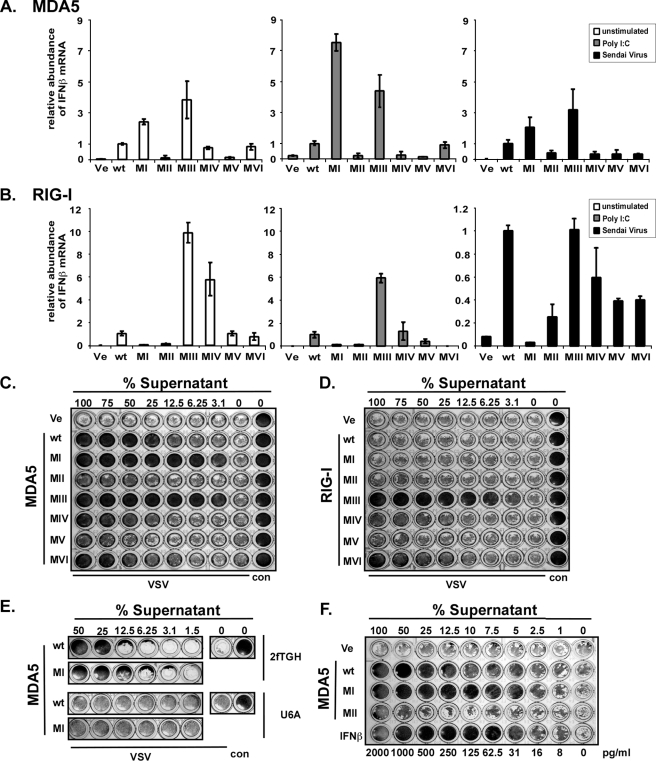FIGURE 5.
Constitutive IFNβ transcription and antiviral activity by mutant MDA5 and RIG-I. MDA5 (A) and RIG-I (B) wild type and mutant protein effect on IFNβ mRNA levels were measured by real time RT-PCR in HEK293T cells. Relative IFNβ mRNA abundance was measured in unstimulated cells (white) or in cells stimulated by 5 μg/ml poly(I-C) transfection (gray) or infection with 3 × 106 PFU Sendai virus (black) for 6 h prior to RNA extraction. IFNβ mRNA levels were normalized to glyceraldehyde-3-phosphate dehydrogenase mRNA, and data represent relative activity normalized to the wild type helicase protein under each condition. Representative data of three independent experiments are shown, and error bars represent standard deviation of duplicate samples. To measure antiviral activity, HEK293T cells expressing wild type or mutant MDA5 (C) or RIG-I (D) proteins were incubated for 36 h before the supernatant was diluted and transferred to freshly plated 2fTGH cells. After 8 h of incubation, the 2fTGH cells were infected with 6 × 103 PFU of VSV (Indiana strain). Cells were fixed 18 h post-infection and stained with methylene blue in 50% ethanol. E, IFN receptor signaling is required for antiviral responses. Data are similar to C but the diluted supernatants were added to 2fTGH and U6A (STAT2-deficient) cells for comparison. F, estimation of antiviral strength of expressed MDA5 wild type and motif I by comparison with purified IFNβ. In this example, equivalent protection end points were observed for 12.5% MDA5 wild type supernatant, 5% MDA5 motif I supernatant, and 31 pg/ml in IFNβ. Ve, vector control; wt, wild type; con, control.

